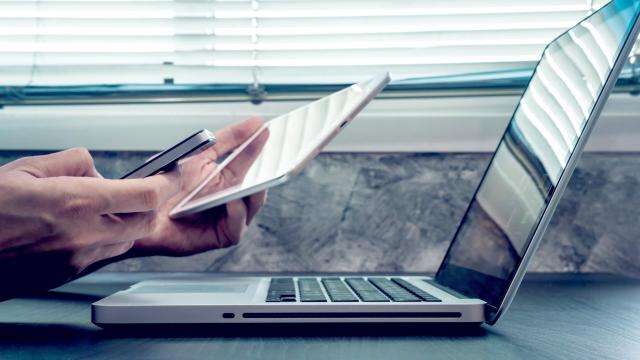When you need to access data like contacts, calendar events, and photos across all your devices, iCloud is your best friend. And yet, it’s often our best friends who can really get on our nerves. I know the frustration of an iCloud backup taking so long that I end up cancelling it. (Of course, that act of impatience leaves me even more frustrated, and then I resort to texting myself grainy versions of the photos that I needed to sync in the first place.)
In perfect conditions, the iCloud sync process should only take a few seconds. If it feels like it’s taking forever, though — or you’re simply as impatient as I am — here are a few simple steps to get things running efficiently.
Why iCloud sync might be slow
If you have iCloud backups turned on automatically, your device should back up when your phone is connected to power, locked, and connected to wifi. The top reasons for a stalled or slow syncing are low power or a shoddy network connection.
For optimal backup speed, make sure that all your devices are connected to solid wifi or cellular connection. Whatever your battery percentage, it doesn’t hurt to plug your device into power, especially if you’re trying to sync a lot of data.
For Photos specifically, images won’t sync automatically if your iPhone is in Low Power Mode. According to Apple’s support page, the time it takes for your photos and videos to upload to iCloud depends on the size of your collection and your internet speed. If you have a large collection of photos and videos, your upload might take more time than usual.
Connect to the same wifi
In addition to needing a strong network connection, make sure the devices you want to sync are connected to the same network. This way, iCloud can transfer data directly between the devices instead of taking a “detour” through the iCloud servers.
Check for available storage space
First, make sure your account has enough available space in iCloud. Tap Settings > [your name] > iCloud > Manage Storage, which will list how much iCloud storage you’re using and which apps are eating up the most storage. Consider deleting seldom-used apps that are taking up space, or you can upgrade your iCloud storage plan to hold more data. Learn how to buy more iCloud storage.
Check for updates
Make sure you’re running the latest version of macOS on your Mac, iOS on your iPad or iPhone, or Windows on a PC.
You can also double-check that iCloud services are working correctly by visiting Apple’s System Status page to make sure there aren’t any software issues out of your control for the time being.
Check that sync is turned on
Whether your iCloud backs up automatically or manually, make sure that all the devices you want to sync are (1) configured to the same time and date and (2) have iCloud Drive/Documents & Data enabled. Here’s how to turn on iCloud backups automatically:
- iOS: Settings > Apple ID > iCloud > iCloud Drive. Toggle iCloud Back to “On”
- Mac: System Preferences > iCloud > ensure all the iCloud services you want to sync are checked.
To manually back up your phone via iCloud, go to Settings > [your name] > iCloud > iCloud Backup > Back Up Now. This is also how you can check the last time your device was successfully backed up.
For contacts and calendars: Force sync
If you made a change to your contacts or calendars on one device that isn’t showing up on another, this is a manual trick that will trigger it to appear on the new device.
Select the app on your iOS device. For Calendars, tap the “Calendars” button at the bottom of the page; For Contacts, select “Groups.” On the next page, drag the screen down until the spinning activity icon appears at the top. The activity icon should spin briefly, and you should find iCloud has synced your calendars for you.
Log out of iCloud and log in again
The classic “turn it off and on again” hack: If your network, power, and system updates are all in check, then you should try logging out of your iCloud account on your iOS device or Mac, then log back in.
Shared folder hack
One user tip posted in this Apple forum suggests creating a shared iCloud folder for yourself. The idea is that, for instance, it can take forever to wait on a single photo to get backed up as one of many while Photos syncs between devices. Instead, you can take a shortcut by uploading that pic to iCloud Drive. This works best when you’re trying to isolate specific uploads out of a much larger backup.
Here’s how to create a shared iCloud folder. Try it out and report back to us, and may all your devices be in sync from here on out.

Leave a Reply
You must be logged in to post a comment.